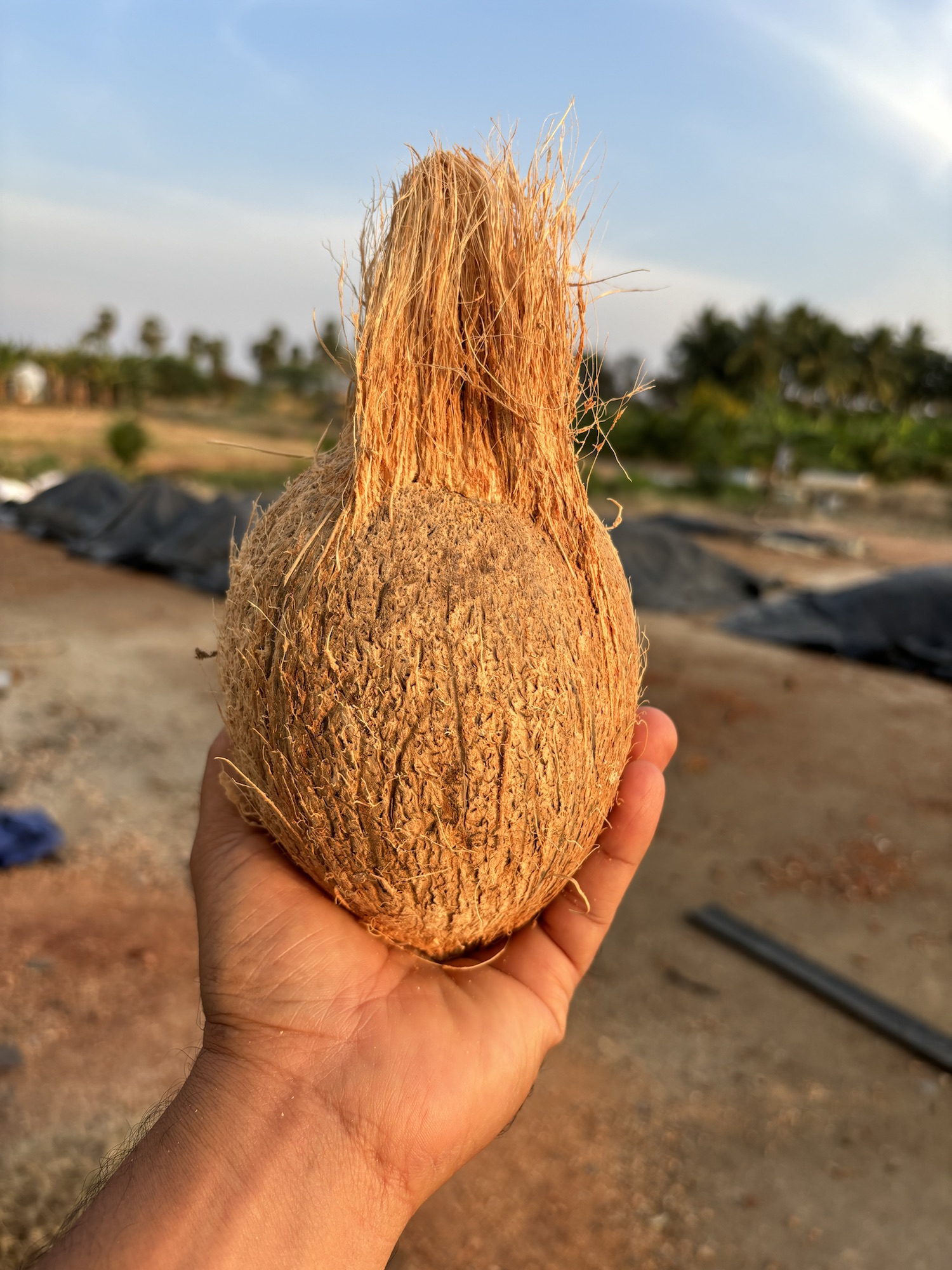
Coconut copra, the dried kernel of the coconut, is a crucial product in the coconut industry, widely used for extracting coconut oil and in various food and industrial applications. The process of making copra involves several steps, from harvesting the coconuts to drying the kernels, ensuring the final product is of high quality.
Harvesting Coconuts
The process begins with the selection of mature coconuts, typically harvested when they are about 11-12 months old. Harvesting can be done manually using long poles or by climbing the coconut palms. The mature coconuts are then collected and transported to the processing site.
Dehusking and Splitting
Once harvested, the coconuts are dehusked to remove the outer shell. This can be done manually using a machete or mechanically. After dehusking, the coconuts are split open to extract the white kernel. The kernel, still attached to the shell, is then ready for the drying process.
Drying Methods
Sun Drying
Sun drying is the traditional method of drying coconut kernels. The split coconuts are laid out under the sun for several days. This method is simple and cost-effective but depends heavily on weather conditions.
Smoke Drying
In smoke drying, the split coconuts are placed on racks above a smoky fire. The heat and smoke help to dry the kernels. This method can produce a slightly smoky flavor in the copra and requires careful control to avoid over-drying.
Kiln Drying
Kiln drying is a modern approach that uses controlled heat to dry the coconut kernels. This method is faster and more reliable than traditional methods, ensuring consistent quality. The coconuts are placed in a kiln where hot air circulates to dry the kernels uniformly.
Hybrid Methods
Some producers use a combination of sun drying and kiln drying to optimize efficiency and ensure high quality. The initial drying can be done under the sun, followed by final drying in a kiln to reduce moisture content to the desired level.
Quality Control
Quality control is crucial in copra production. The moisture content of the dried kernels should be below 6% to prevent mold growth. Regular checks are conducted to ensure the copra is free from contamination and meets industry standards.
Packaging and Storage
Once dried, the copra is packed in sacks or containers. Proper packaging is essential to protect the copra from moisture and pests. The storage area should be dry, cool, and well-ventilated to maintain the quality of the copra.
Uses of Copra
Copra is primarily used to extract coconut oil, which is widely used in cooking, cosmetics, and industrial applications. The by-products, such as coconut cake, are used as animal feed. Copra also finds applications in various food products and as a raw material in manufacturing.
Economic and Environmental Impact
The copra industry is a significant source of income for coconut-producing regions. However, environmental considerations such as sustainable farming practices and efficient drying methods are essential to minimize the ecological footprint.
Conclusion
The coconut copra making process is a vital part of the coconut industry, providing a valuable product used in many applications. With advancements in drying technology and quality control, the production of copra continues to evolve, offering opportunities for increased efficiency and sustainability.










